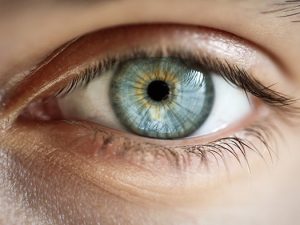Basal temperature pregnancy test
To take your basal temperature, you must follow a daily routine.
The basal temperature test is based on the temperature variations of the woman’s body according to the moment of her menstrual cycle. Also called the Ogino method (after the discoverer of it), the woman must record her body temperature daily, always taken simultaneously, to know if she is ovulating or infertile.
Pregnancy test
woman takes her temperature
Blood and urine test
Home test
Price of a home test
Basal temperature testHow to know if you are pregnant with basal temperature
A much more traditional formula for knowing if you are pregnant is applying the basal temperature method. It is based on the fact that body temperature is lower at the beginning of the menstrual cycle, during ovulation, and rises in women’s infertile period. Therefore, you can provide us with information on whether or not pregnancy has occurred: if the highest temperature (above 37 degrees) is recorded for more than 18 days, the egg has likely been fertilized.
To apply this method, a routine is essential every day:
You are taking your temperature when you wake up, before getting out of bed, and without making any physical effort. It is recommended to have slept a minimum of six to eight hours; otherwise, you have to rest for at least an hour before taking it.
Perform it every day simultaneously to avoid records of different temperatures and in the same place. It is recommended in the mouth, anus, or vagina, as the measurement in the armpit can be inaccurate.Obligatory consultation to the gynecologist
Whether the tests give us negatively, and the menstrual cycle still does not appear, or if they test positive or we believe that our basal temperature indicates a pregnancy, the next step will be to go to the gynecologist for a thorough examination to confirm the situation. This specialist will perform a blood test and a vaginal ultrasound that will remove any doubt.
According to a study by the Spanish Society of Gynecology and Obstetrics (SEGO), the probability of pregnancy in a couple who have sex regularly is only 20 percent per month, according to a study by the Spanish Society of Gynecology and Obstetrics (SEGO). Thus, the time it takes for a healthy couple to conceive a child is five months and two weeks. Age is decisive: a woman between the ages of 20 and 25 has a 20% to 25% chance of becoming pregnant within the first month of trying, while after 30, the percentage drops to 15% in each cycle menstrual.
What is the relationship between basal temperature and ovulation?
The basal temperature test to achieve pregnancy
Whether you are looking for a pregnancy or want to avoid it, knowing the time of ovulation (which is also your fertile days) is key to success. And one of the ways to know when you are ovulating (in addition to paying attention to a series of physical and emotional signals) is to use the basal temperature test.
Basal temperature is your body temperature, but the temperature you have when you wake up. This body temperature increases at the time of the luteal phase, that is, when your fertile period of ovulation ends. It is estimated that the basal temperature may increase by 0.2 to 0.5 degrees at this time. An increase that is also maintained until menstruation or, in the case of conception, during pregnancy.
The fertile days in women correspond to the four days before ovulation and the two days after ovulation. The basal temperature test can help you get closer to the best day to achieve pregnancy; once you check on which day of your cycle, the luteal phase (the phase that follows ovulation) usually occurs.
How the basal temperature test is performed to achieve pregnancy
To use the basal temperature test and be successful if you are looking for pregnancy, you must follow a routine and be disciplined since you will have to record your basal temperature day after day. Take note of these essential tips before starting:
- Use a mercury thermometer if possible, as they are more accurate. But do not worry. You can also do it with a specific digital thermometer for this method, which is sold in pharmacies.
- You should take your basal temperature as soon as you wake up and before getting out of bed. So keep the thermometer close by. It would be best if you left it prepared the night before.
- Use a notebook where you can write down your basal temperature or a diary to specify the day and time you measured your basal temperature. Try to do the measurement always at the same time.
- Always measure basal temperature in the same body area: armpit, mouth, or vagina. In the three areas, the result may vary.
- Aim is an observation if you have experienced any alteration in your activity the night before: if you have gone out for a run if you have stayed up all night or are ill. All of these factors can influence your basal temperature.
Now, follow these steps and see if you can find your fertile days with the basal temperature technique:
- You should start measuring your basal temperature on the first day of your cycle. That is, the first day you have your period.
- Write down your temperature each morning at the same time. As you write it down, you must create a graph to draw a curve.
- To create your basal temperature curve, point the days horizontally and the temperature vertically. Then you have to draw a line joining all the temperature points to find the point where the curve rises.
- As soon as you locate the first temperature rise, you will know that this is when your fertile days are over.
- If you are looking for pregnancy and you succeeded, you will see how the basal temperature continues to be higher than usual. It will surely not go down until the end of the pregnancy.






























Add Comment